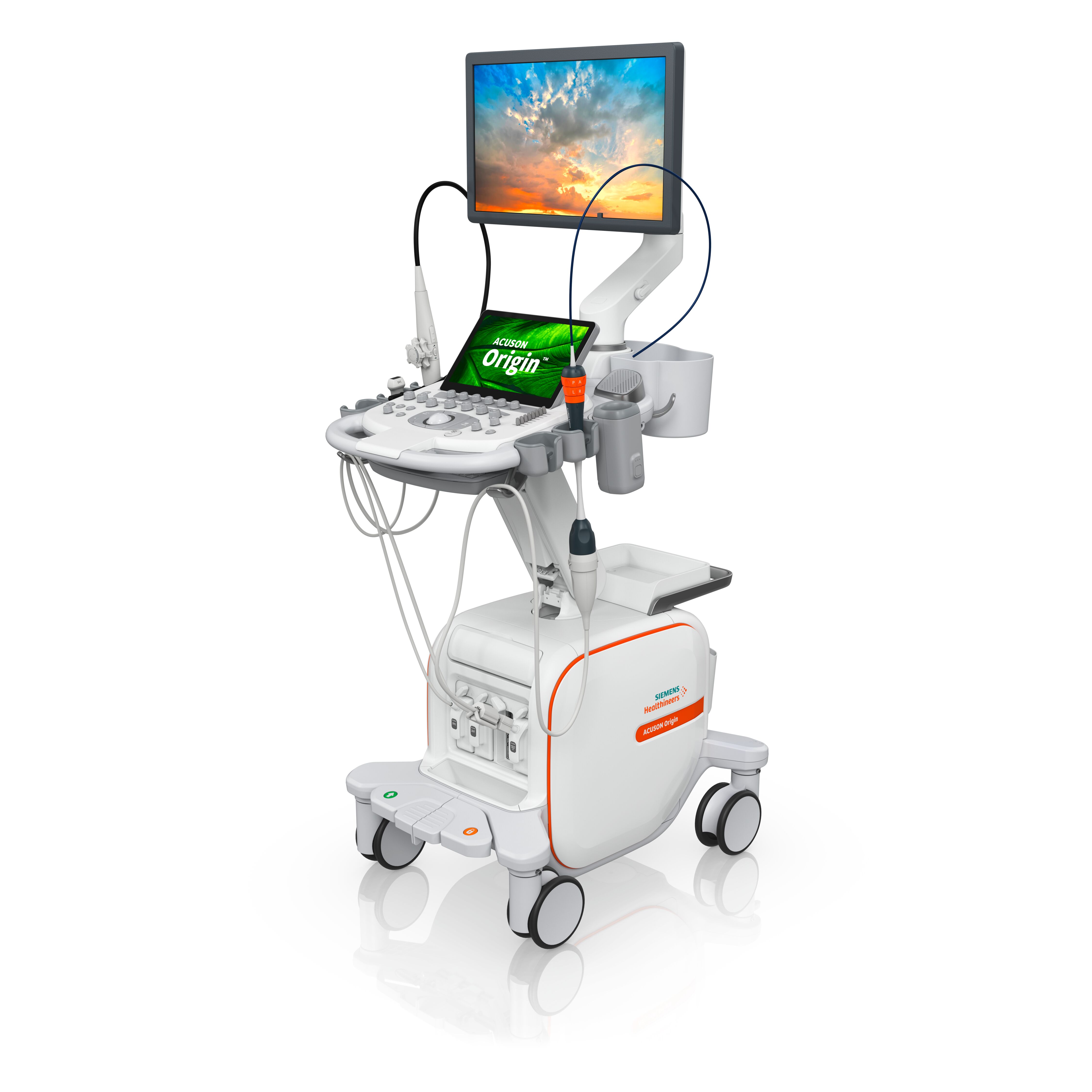Siemens Healthineers Nets FDA Clearance for Cardiovascular Ultrasound, 4D ICE Catheter
Images

Siemens Healthineers received FDA clearance of the ACUSON Origin, a new dedicated cardiovascular ultrasound system powered by artificial intelligence (AI) features. These features can help physicians perform cardiac procedures more efficiently in the areas of diagnostics, structural heart disease, and electrophysiology. Available exclusively with the ACUSON Origin, the new AcuNav Lumos 4D ICE (intracardiac echocardiography) catheter provides advanced imaging for complex heart procedures.
“With its advanced AI features and potential to enhance diagnostic accuracy as well as patient care, the ACUSON Origin is positioned to reshape healthcare’s approach to cardiovascular imaging,” said David Zollinger, head of Cardiovascular Ultrasound at Siemens Healthineers. “And the AcuNav Lumos is the latest milestone in our 24-year history with ICE. Since 1999, our ICE catheters have helped more than 2 million patients, reducing the need for anesthesia during procedures.”
The ACUSON Origin addresses the entire continuum of cardiovascular patient care, including diagnostic, structural heart, vascular, electrophysiological, and pediatric procedures. It minimizes the cognitive and ergonomic workload of cardiac exams and procedures, allowing for greater consistency, reproducibility, and user efficiency. Its suite of AI-powered features for measurements, view recognition, and imaging assistance builds on the company’s rich history of AI innovation, which dates to the late 1990s. These AI features have been trained on one of the world’s largest image databases, which contains over 2 billion annotated images. The features can save the user time on echocardiography procedures by providing automated measurements that are accurate and reproducible. Capable of more than 5,600 AI-powered measurements on transthoracic echocardiography (TTE) and transesophageal echocardiography (TEE), the ACUSON Origin enhances diagnostic accuracy and streamlines workflow. The system is the first to provide real-time cardiac view recognition. AI Assist, a new feature for TTE, recognizes cardiac structures immediately and automatically positions color and spectral Doppler regions of interest when the transducer makes contact with the chest wall. For 12 standard echocardiogram views, AI Assist has a 99% accuracy rate for proper view classification and Doppler placement on 23 anatomical and hemodynamic targets.
The ACUSON Origin also provides automated contouring and quantification of all four cardiac chambers without the need for an electrocardiogram (ECG) via the 2D and 4D HeartAI features. 2D HeartAI enables auto tracking on contrast images—a feat no other commercially available system can perform. It has a 99% accuracy rate for detecting left-ventricular end-diastolic volume (LVEDV) and left-ventricular end-systolic volume (LVESV). 4D HeartAI is a dual modality advancement for 4D auto contouring of all four chambers of the heart in 4D TTE and both ventricles in 4D TEE, averaging up to five beats with or without an ECG. 4D HeartAI boasts a 98% multiplanar reconstruction (MPR) identification and alignment accuracy. The system is the first to provide real-time cardiac view recognition.
Several features debuting on the AcuNav Lumos fourth-generation 4D ICE ultrasound catheter enhance procedural guidance for better patient care. The catheter enables interventional cardiologists and electrophysiologists to treat patients who otherwise would be unable to undergo structural heart interventions, including patients with TEE or general anesthesia contraindications, and patients with tricuspid regurgitation. The AcuNav Lumos offers improved MPR biplane imaging—with or without an ECG—for more accurate anatomical assessment and device guidance as well as improved leak detection with real-time 4D color Doppler. Three-dimensional calipers label cardiac anatomy and provide accurate 3D measurements.